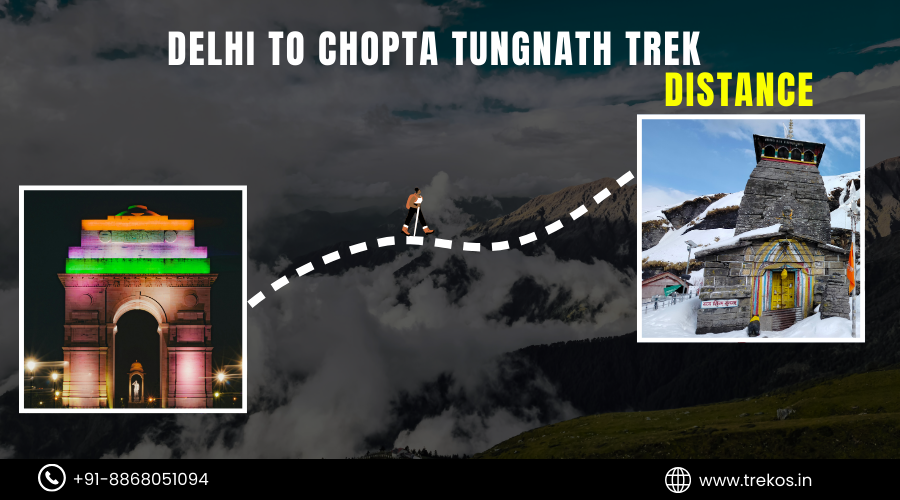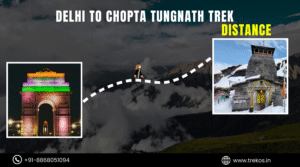About Fitness and Nutrition Tips for Pin Parvati Pass
This Pin Parvati Pass trek is one of the most thrilling and adventurous treks India has to offer. It reaches an altitude of 17,450 ft. and stretches 112 km, where contrasting terrains in Pin Valley and Parvati Valley meet at a point called Pin Parvati Pass. This trek is initiated from Bhuntar near Manikaran town in Parvati Valley and ends at Mud Village in Spiti Valley. As it reaches 5,319 meters, this trek needs good fitness and nutrition tips for Pin Parvati Pass to handle physical and environmental challenges.
| Features Description of Pin Parvati Pass Trek | |
| Starting Point | Bhuntar |
| Ending Point | Mud Village |
| Duration | 10-12 days |
| The best time to visit | Monsoon Season (July- December) |
| Moderation level | Difficult |
| Altitude | 17,450 ft. |
| Extended Distance | 112km |
Importance of Fitness and Nutrition Tips for Pin Parvati Pass Trek
Fitness and Nutrition tips for Pin Parvati Pass are the most crucial part of any trek, hence so as well for Pin Parvati Pass Trek whose height is 17,450ft. with two different difficult geographical terrains. Fitness will help you deal with the trek’s physically demanding portion, which might include some strength and flexibility exercises.
Proper fitness and nutrition trip will gift you with an energetic and hydrated feeling to stay active and healthy at high altitudes. Such fitness and nutrition tips for pin parvati pass will help complete the most challenging trek in the Himalayas.
The unavailability of fitness and nutrition tips for pin parvati pass will not make you take time to enjoy the beauty of nature and focus on the next step, which is going to be sore and suffering from physical trauma as well. You all are aware of the fact that as high you go on the Himalayas, the amount of oxygen starts lacking, and your body starts working double in those locations. Sometimes people just focus on stamina and aerobic fitness and ignore muscle-building strength so its important to focus on muscle strenthing which will help you to climb.
Fitness and Nutrition tips for Pin Parvati Pass trek
Preparing yourself for the Pin Parvati Pass trek needs a combination of physical strength, flexibility, and heart-related stamina. Here are some important fitness and nutrition tips for pin parvati pass for you to get ready for the trek:
-
Fitness tips for Pin Parvati Pass Trek

1. Cardiac Stamina Training
As the Pin Parvati Pass trek is 17450ft. high which needs a long day of hiking you should focus on your heart-related stamina to handle the activities.
- Incline Walking- You can workout on incline treadmil which gives you practical exposure of mountain climbing and makes your leg and calf muscle strong and also increase your cardiac stamina.
- Cycling– Cycling helps to improves lower portion body muscles and make it strong and leads to helpyour heart and lungs to deliver oxygen in your muscles.
- Swimming- Swimming helips your overall fitness and lead to increase stamina with focus on upper body muscles as well.
- Running- Running also improves overall body fitness and make it lean and fit and helps lungs and heart to deliver oxygen in your muscles.

2. Leg Strengthening Exercises
- Squats– Squats help you to build leg strength which is important to climb steeps in hilly areas and provides stability when navigating in uneven terrains. It makes your quads, hamstring, and flutes strong.
- Lunges– Lunges stimulate the movement pattern used in trekking, especially when stepping over obstacles. Building strength in your legs and improving stability through lunges helps you to handle the ascents and descent challenges.
- Step-Ups– Step-Ups mainly focus on the quadriceps and glutes, building strength and stamina for uphill walking. Practicing step-ups helps you to build the ability to lift your weight in hilly areas.
- Calf-raises– Calf- raise the strength of the gastrocnemius and soleus muscles in the calves which helps you to walk in incline and decline hilly areas.

3. Flexibility and Balance
- Yoga– Incorporates yoga sessions to improve flexibility, breathing, and overall body performance.
- Dynamic Stretching– Focus on stretching over your hamstrings, quads, calves, and hips.
- Balance Training– Practice single-leg stand or balancing exercises to enhance your stability on rocky or uneven paths.

4. Rest and Recovery
Your body needs to recover from intense training:
- Sleep for enough hours every night 7-8 hours to allow the muscles to repair themselves.
- Ensure you have rest days between intense workout sessions to avoid burnout.

5. Mental Preparation
- Prepare yourself mentally for long, grueling days.
- Use mindfulness or meditation practice during difficult times to keep calm and focused.
-
Nutrition Tips for Pin Parvati Pass Trek
Other preparations like nutrition are also important to keep fit when embarking on the trek. Treating nutrition in pre-trek, on-trek, and post-trek helps in understanding.
1. Pre-Trek Nutrition
The pre-trek nutrition prepares the body with the right food and hydration before embarking on the trek.
Importance:
- Energy Reserves– A balanced diet before you hike ensures that glycogen in your muscle and liver is replenished, prepared to sustain you for the energy that you would need during this physical activity.
- Hydration– Proper hydration before the hike will prepare your body for the effort of physical activity so that dehydration does not occur during the hike.
- Nutrient Densely Food– High complex carbohydrates, such as whole grains, intake of lean protein (non veg)chicken, eggs and fish,for (veg ) paneer, and for (vegan) soya chunk, tofu, fruits and vegetables, for long-term energy sources. Include legumes and good fats, including nuts and avocados, for total nutrition.
- Duration– Food must be taken around about 2-3 hours before the start of the trek which will give better performance with more endurance.
2. On- Trek Nutrition
Trekking nutrition is the food and hydration strategy that you use during the actual trekking period.
Importance:
- Keeping Good Energy Levels– Small meals or snacks taken throughout the entire period of the trek help keep energy good and higher during the trek. Nutritious items, including energy bars, nuts, dried fruits, and trail mix, should be included.
- Hydration– Drink water as much as needed. One would be more vulnerable to dehydration at greater altitudes. For this, it would be recommended to drink 2 to 3 litres a day, but again this greatly depends on temperature and intensity of activities.
- Electrolyte Balance– Foods and drinks that have electrolytes may help in replenishing lost minerals when sweating and in the functionality of muscles as one hydrate.
- Digestibility– Select foods that you can carry on a trek, and also those foods which are digestible easily. Avoid heavy or greasy food products since they will be a burden.
3. Post-Trek Nutrition
Post-Trek nutrition is replenishing and rejuvenating your body after your trek is over.
Importance:
- Muscle Repair– After returning back from trek you should consume lean meat, tofu, paneer, soya chunks, milk, nuts, fruits, vegetables to gain protein, complex carbohydrate, fat, vitamin and minerals in your body so that it can reapair your muscle tissue and helps in recovery.
- Rehydration– Rehydration is highly necessary after your hike, especially if you have lost a lot during your hike. You may look to top up with electrolyte-based drinks so you rebalance the lost salt.
- Low Inflammation– Foods are anti-inflammatory by nature. So, an antioxidant-rich diet with fruits and vegetables like berry, leafy green, nuts will lessen soreness after exercise and help in recovery.
Foods for Fitness and Nutrition Tips for Pin Parvati Pass
Here are the overview of food and drinks require for trekking, who supports your fitness and nutrition tips for pin parvati pass and overall health, physical health, energy and performance during trekking.
1. Complex Carbohydrate
- Whole Grains- Brown rice, Quinoa, Oats, Barley, Ragi
- Starchy Foods- Potato, Sweet Potato, Corns
- Legumes- Black beans, Lentils, Chickpeas
2. Protein
- Plant-based-Tofu, Soya Chunks, Mushroom
- Nuts and Seeds- Almonds, Walnuts, Chia seeds, Pumpkin seeds
3. Healthy fats
- Avocado, Olive oil, nuts and nut butters, Milk
4. Vitamins
- Fruits- Banana, Apples, Oranges, Berry, etc.
- Vegetables- Green leafy veg, carrot, okra, bell pepper, etc.
As per the trek guides all these foods are important which gives protein, fat, vitamins and minerals, but there is one exception, it is that you shouldn’t intake non veg food like chicken, or mutton before trekking as it not good for high altitude mountains because it creates stomach issues and irregular bowel movements in the mountains. Also advice to go for local cuisines in Himalayas which are worth trying and have good amount of nutrtional value which is good for overall heath.
CONCLUSION
The right fitness and nutrition tips for pin parvati pass help prepare the body for challenging activities like trekking and ensure optimal performance. A very effective workout routine has strength, cardiovascular, and flexibility work to ensure endurance, balance, and agility needed for long treks. Proper nutrition rich in complex carbohydrates, proteins, healthy fats, and hydration fuel the body to give the best before, during, and after the trek. Focusing both on fitness and nutrition tips for pin parvati pass would actually enhance overall stamina, recovery, and the trekking experience as a whole to be well-prepared for what life throws at you regarding an adventure like the Pin Parvati Pass Trek.
Fitness and Nutrition Tips for Pin Parvati Pass FAQs
1. What are the essential fitness and nutrition tips for Pin Parvati Pass Trek?
Preparations for Pin Parvati Pass Trek begin by building up the leg muscles through squatting, lunging, and step-ups.Cardiovascular stamina can be increase by runnig, cycling, swimming and inclining treadmil and including nutrition like lean protein, legumes, complex carbs and etc. Hydration is also important-a sufficient intake of water not only before but also during and after the trek.
2. Why is fitness very essential to the Pin Parvati Pass trek?
Fitness is essential due to the height reached, steep climbing, and the distance. Strong leg muscles and good cardiovascular endurance will help you walk over problematic terrains without losing energy.
3. What are the nutrition tips before the trek?
Before you head out on the trek, you should have a nutrient-rich food with a lot of whole grains, proteins such as lean meat, soya chunks or tofu, and healthy fats like avocado or nuts. Hydrate at least a couple of days before the trek so that you are ready on time.
4. What am I supposed to eat on the trek?
On the trek, energy bars, dried fruits, trail mix, and nuts are to be taken as small and frequent snacks that can be used for quick long-term energy. Hydration and replenishment of minerals through often used water and electrolyte drinks once minerals get lost.
5. What are the nutrition after the trek in recovery?
Right after the hike, take care of diet with protein-rich food, including lean meats, dairy, or legumes, to recover the muscles. That goes hand in hand with complex carbohydrates and refills glycogen levels. Hydration comes into play as well; hence, drink plenty of water, but you might be interested in electrolytes-containing recovery drinks as well.
6. How does proper fitness and nutrition tips for Pin Parvati Pass help reduce the risk of injury while on trek?
Proper fitness readies muscles in response to various physical forces encountered while on trek, thus reducing strain to your joints and ligaments. Proper nutrition promotes energy, balance, and hydration, thus preventing fatigue and thereby minimizing muscle cramp and injury.

















